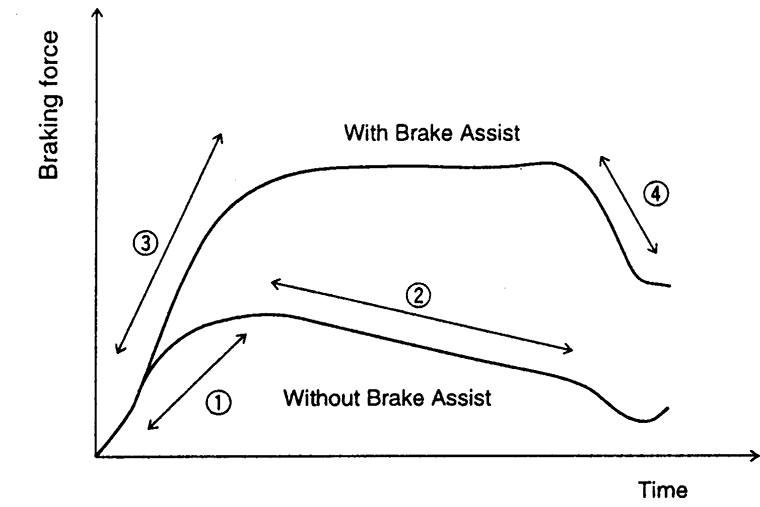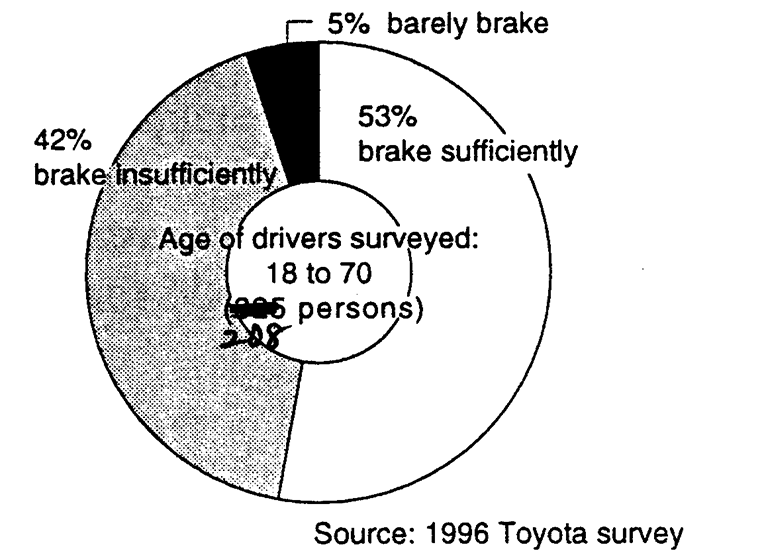Feb. 26, 1997
Toyota Develops Brake Assist Safety Technology
New System Improves Emergency Braking Performance
Toyota Motor Corporation has developed a new active-safety technology called Brake Assist, which improves braking performance in emergency situations. Brake Assist will be installed in Toyota vehicles beginning with new models to be launched this spring.
Brake Assist interprets a quick push of the brake pedal as emergency braking and supplements the braking power applied if the driver has not stepped on the brake pedal hard enough.
In emergency situations, drivers, especially if inexperienced, often panic and do not apply sufficient pressure to the brake pedal. A brake assist system that simply increases braking power when the pedal is pushed lightly, however, would cause problems with brake control under normal driving conditions. Moreover, drivers would become accustomed to such a system and would not push firmly enough on the brake pedal in emergencies.
Toyota's Brake Assist system measures the speed and force with which the brake pedal is pushed to estimate whether the driver is attempting to brake rapidly or not, and applies additional braking pressure to maximize braking performance for both conventional and anti-lock brake system (ABS) equipped vehicles. This can reduce the emergency braking distance by about 30%, allowing any driver to brake within the same distance as would a highly skilled driver.
A particularly important feature of Brake Assist is that the timing and degree of braking assistance are designed to ensure that the driver does not discern anything unusual about the braking operation. When the driver intentionally eases up on the brake pedal, the system accordingly reduces the amount of assistance it provides.
- Fig. 1
- Brake Assist Effectiveness
- A driver who panics in an emergency situation may brake quickly but not strongly enough to generate the required braking force.
- Rather than continuing to depress the brake pedal, such drivers tend to ease up on the pedal too soon in the braking sequence.
- When the Brake Assist system determines that the driver is braking quickly, it increases braking power, even when the brake pedal is not being pushed hard enough.
- When the driver intentionally eases up on the brake pedal, the Brake Assist system also reduces the degree of braking assistance it provides, so that the driver does not discern any unusual braking operation.
- Fig. 2
- Roughly 50% of all drivers trying to make an emergency stop on a dry road do not brake hard enough.
This indicates whether or not drivers apply enough force to bring the brakes to just before the point at which they lock (for non-ABS vehicles).






